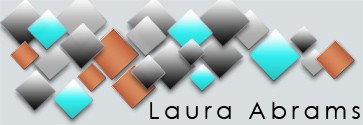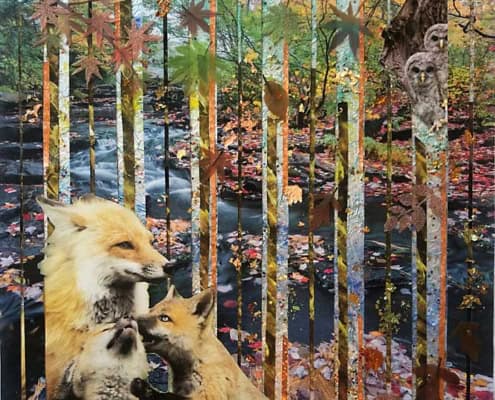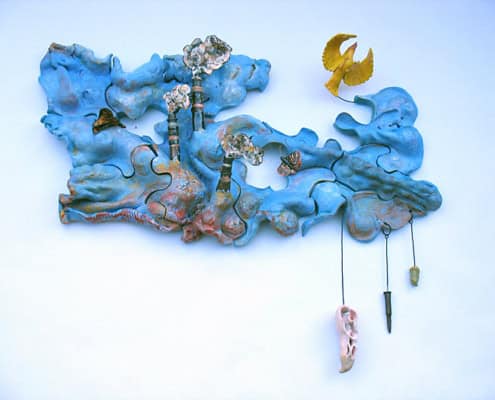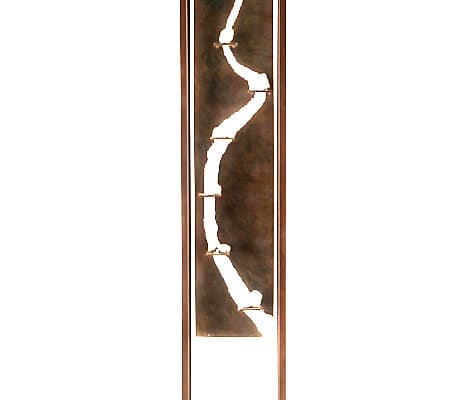Habitats
Abrams Claghorn Gallery, Albany, CA
November 4-November 24, 2024
Opening Reception Saturday, 3-6pm, November 9, 2024
This November, I am excited to be making my curatorial debut at Abrams Claghorn Gallery. I am honored to be joined by four respected artist colleagues–Elizabeth Addison, Salma Arastu, Marguerite Elliot, and Vicki Gunter–who have each built a rich body of work addressing environmental concerns.
Each artist included in this exhibition addresses the theme of habitats with a unique lens. The core is a shared and passionate interest in nature. From treetops to the ocean floor, from mountains to the rich soil beneath the earth’s surface, every living thing calls the earth home. According to the dictionary, a habitat is “the natural home or environment of a plant, animal, or other organism. It provides the organisms that live there with food, water, shelter and space to survive.” Biotic (living) and abiotic (nonliving) things exist together to form a habitat, where flora and fauna live side by side in a symbiotic effort to survive.
Elizabeth Addison’s richly colored and intricately composed images, many incorporating her original photos of the Smith river, express her connection with the beautiful water and land interface. Salma Arastu has found her muse in the underground network of mycelia that is regenerating, activating, and healing the damaged state of our environment, as well as the invisible tiny microbes that are an integral and essential part of the web of life. Marguerite Ellliot focuses on the durability and resilience of plants and seeds with alternately soft (handmade paper) and hard (welded steel and seed pods) constructions. Vicki Gunter’s detailed ceramic works highlight the environments of creatures and plants, eloquently describing the threats they face. In my own Habitat work, I strive to expose the flora and fauna that exist betwixt slices of picture-perfect landscapes. Seen together, the art expresses wonder and awe at the earth’s beauty, its precious inhabitants, and the palpable environmental challenges faced by us all.
I could not be more pleased that these artistic visions have coalesced into an exhibition that provides a multifaceted view of our home planet in all its complexity, showcasing many facets of earth’s astonishing, turbulent, and resilient beauty.
HABITATS ARTIST STATEMENTS
LAURA ABRAMS
Behind every picture is a story. I endeavor to bring this forward in multilayered compositions that juxtapose idealized landscapes with messy, lived realities. My habitat series—and this exhibition—were inspired by colorful landscape photographs, printed and distributed by nature organizations in the form of calendars. I repurposed these in collages by slicing the images into strips like louvered shades to reveal the flora and fauna within the perfect photographs. A central image anchors each narrative, which may include found or hand drawn plants and animals; organic elements such as grasses, seeds, and shells; discarded materials like plastic and packing materials; and ornaments such as glitter, rhinestones, beads, and ribbons. The concept is to reveal the living things that have been disinvited to public view yet play a vital role in every ecosystem. In these alternate views, I often point to conditions that are less than pretty, like the air pollution that makes sunsets so beautiful; the predator/prey relationship; and the impact of the built environment on the land it occupies. The collages themselves are colorful, decorative little worlds with amusing details and juxtapositions to attract your attention.
ELIZABETH ADDISON
My passion for seeking and storytelling drives both my visual art practice and curatorial work. As a visual artist, I create at the intersection of art, science, and the natural world. My interdisciplinary practice—spanning printmaking, mixed/experimental media, digital art, and installation—gives me plenty of opportunities to be both an artist and an experimenter! The natural world particularly inspires me, and it’s where my scientific curiosity and environmental concerns intersect best, exploring topics from California’s native flora and waterways to social justice and environmental equity. My current work examines California flora and its last wild river, The Smith, through dimensional collage and mixed media. My prints are created with original photography and digital imagery inspired by my daily wanderings near my Berkeley home or my regular travels into nature. I print on 100% cotton rag paper at Kala Art Institute, then cut, paint, and construct dimensionally. These works are intentionally mandala-like, embodying my experiences, reverence, and wonder. Since 2020, I’ve immersed myself in socially and environmentally engaged curatorial work with the Northern California Women’s Caucus for Art and others. This experience has been thrilling, allowing me to connect with like-minded creatives and experts. Together, we amplify our voices, spark action with meaningful discussion, and draw inspiration from the present moment. Art has the power to do that.
SALMA ARASTU
Sacred verses about ecological consciousness and the interconnectedness of all species keep holding my attention, and I feel as though I am experiencing a Divine invitation to delve deeper into these subjects. I have been immersing myself in looking at remedies to save our planet and its ecosystems, and I have found my ‘muse’ in the underground network of mycelia that is regenerating, activating, and healing the damaged state of our environment, and invisible tiny benefactors Microbes who are an integral and essential part of the web of life.
Thematically, the interconnectedness between diverse human cultures and religions has been a cornerstone of my work, as is the desire to bring humanity together through art. This new work builds on my previous project, “Our Earth: Embracing All Communities.” But it charts new territory in the realm of these life-giving networks under our feet. I am getting closer to nature and discovering ancient, ongoing stories of connection and resilience through mycorrhizal pathways. As white filaments are able to graft or connect diverse elements, they inspire me to rethink our relationship and connection to the natural world.
MARGUERITE ELLIOT
Marguerite Elliot invites viewers to explore the interconnectedness of ecosystems and the delicate balance that sustains life. Through various media, Elliot highlights both the beauty and fragility of nature, urging a deeper appreciation and commitment to environmental stewardship.
The small handmade paper sculptures have a dynamic, cocoon-like quality with vibrant earthy tones and organic textures. Incorporating twigs, roots, and natural fibers, they suggest a deep connection to the land and convey both fragility and resilience. These suspended forms embody a delicate balance between growth and transformation.
Rift is a steel sculpture that explores the concept of separation and connection. The vertical steel panel, with its jagged fissure running through the center, suggests the raw power of geological forces. Small white stones, displayed on shelves, symbolize a sense of balance and fragility. This piece is a shrine to our abiotic environment.
Anima Mundi (Latin phrase meaning “soul of the world”) highlights seeds and seed pods, symbolizing the origins of life and growth. The suspended steel panel serves as a display for these natural elements, arranged to emphasize their delicate beauty and significance. The seeds and pods, set against the starkness of the steel, evoke a sense of life’s resilience and the deep connection between all living things. This piece invites viewers to reflect on the cycles of nature and the vital role of seeds in sustaining life on Earth.
VICKI GUNTER
As a native of California, the clay state, I love turning clay to stone. I feel an urgency to create art in this revolutionary time and value clay’s infinite potential − mirroring our own.
Inspired by its no-waste complexity, nature is my source and anchor, in wild places and at my home/studio in East Oakland. I am currently creating work within three series: Canary and Elephant Series: what’s the next canary-in-the-coal=mine for our planet and what are the elephants-in-the-room we need to remove. …My In Everything Series: DNA is in everything. Each piece in the series transforms into a DNA helix in unique ways. My New Era Series was initially inspired by the murder of George Floyd.
I research each piece in the field, online and in my sketchbook before working. I sculpt each piece using slab, solid, wheel or coil techniques. I paint with underglazes, stains and love the process of finishing with beeswax as well as glazes. I enjoy luring the viewer in with beauty, to enchant into guardianship. Clay has a memory. It records your fingerprints and all the ways you held it in your hands. Our earth has a memory and responds to our manipulations. My work in clay draws from the knowledge that everything…us, our food, home, clothes, tools, toys all come from the ‘clay’ of the earth. My hope is, that we will seek solutions in nature-based knowledge to grow, gather, love and consume with justice for all leaving the smallest fingerprint.








What time is the opening reception? You’ve named the date, nov 9, but what time? Street address would help, too.
Congratulations, by the way– it would be great to see you. Cheers, Paul